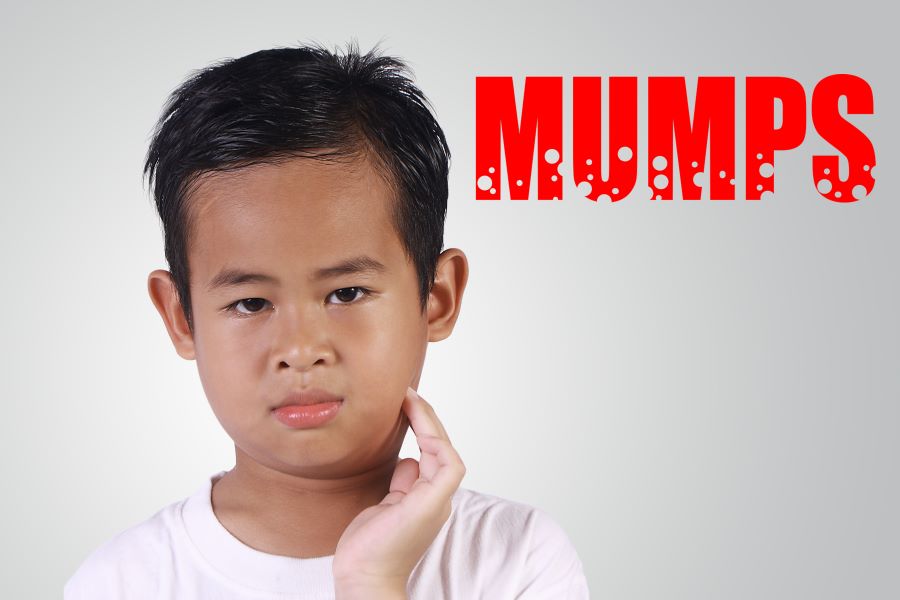Even With Vaccine, Mumps Still Poses a Threat

Mumps is a viral infection that most commonly affects the parotid gland, which is the major salivary gland in front of the ear. Mumps is not very common in the United States — it has decreased by about 99 percent since the MMR vaccine was first licensed for use in 1967.
Outbreaks still occur from time to time, especially among those living in close-quarters, such as college dormitories or among young school-age children, particularly those who have not been vaccinated. In 2016, the number of reported mumps cases tripled over the previous year, thanks to outbreaks in two Midwestern universities. Widespread vaccination programs were launched in response to these outbreaks.
How is mumps spread?
The virus is spread through respiratory droplets and direct contact. Infected people are contagious from about two days prior to the onset of symptoms to about five to nine days after symptoms develop. Most people will develop symptoms of the virus within twelve to twenty-five days after contact, and up to 20 percent of people infected will have no symptoms at all.
Mumps usually starts with nonspecific symptoms such as fever, headache, body aches, and fatigue and then progresses to involve pain, redness, and swelling of the parotid glands within the next two days. Parotid gland swelling may last up to ten days.
The complications related to the mumps virus can be severe and include orchitis (painful inflammation of the testicle), oophoritis (painful inflammation of the ovary), viral meningitis, encephalitis, and deafness. Orchitis is the most common complication, occurring in up to 30 percent of those infected. Orchitis causes not only severe pain and possible testicular shrinkage, but may also cause infertility. Meningitis and encephalitis can result in hospitalization, altered mental status, seizures, and paralysis. Most people who experience these symptoms do make a complete recovery, but not all will.
Mumps is largely a clinical diagnosis as testing in the age of the MMR vaccine is more challenging. Though clinical symptoms alone are enough to make the diagnosis, the virus may be formally diagnosed based on antibody levels, viral culture, or detection by a test called a PCR that is run on blood or a cheek swab.
There is no medication to cure the mumps virus. Treatment includes pain management, heat and cold pack use for parotid or testicular inflammation, and anti-inflammatory medications. Hospitalization may be warranted in cases of meningitis and encephalitis.
The mumps vaccine
Most children are vaccinated against mumps in infancy, when they receive the MMR vaccine. According to the Centers for Disease Control and Prevention, a single dose of the mumps vaccine is about 78 percent effective in protecting against the disease. This first dose is administered between 12 and 15 months of age. Two doses are about 88 percent effective. The CDC’s recommended vaccine schedule calls for all children to have two doses of the MMR by age 6.
Unfortunately, the vaccine only confers protection for about 10 years, after which time its benefit starts to fade. Along with crowding, this explains why mumps outbreaks are more common on college campuses.
Sources:
- Albrecht MA
- Mumps
- UpToDate, 2017.
Centers for Disease Control and Prevention - Mumps Cases.
Meissner HC - What You Need to Know About Mumps
- AAP News, 2016.
Powered by Bundoo®










